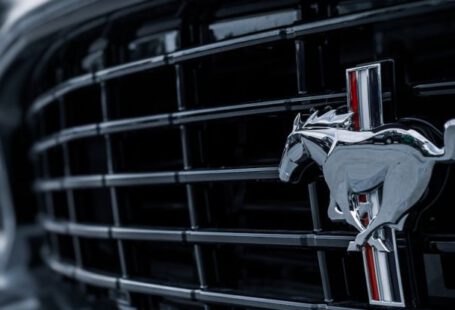Swapping Mustang Seats: A Guide to Upgrading Your Ride
The Ford Mustang is an iconic American muscle car known for its powerful performance and sleek design. However, for some Mustang owners, the stock seats may not provide the level of comfort or support they desire. Swapping out the factory-installed seats for aftermarket options can transform your driving experience and enhance the overall aesthetics of your beloved pony car. In this guide, we will explore the process of swapping Mustang seats, from selecting the right replacements to the installation steps involved.
Choosing the Right Seats
Before diving into the seat swapping process, it is essential to research and select the right seats for your Mustang. There are various factors to consider when choosing aftermarket seats, including material, design, comfort features, and compatibility with your vehicle. Whether you prefer leather, suede, or cloth upholstery, make sure to opt for seats that not only complement the interior of your Mustang but also provide the desired level of support during spirited driving.
It is also crucial to ensure that the seats you choose are compatible with your specific model year of Mustang. Different generations of the Mustang may have varying seat mounting points and configurations, so be sure to double-check the fitment before making a purchase. Additionally, consider whether you want seats with added features such as heating, cooling, or adjustable lumbar support to further customize your driving experience.
Removing the Old Seats
Once you have selected the new seats for your Mustang, it is time to begin the swapping process. Start by disconnecting the battery to prevent any electrical mishaps during the installation. Next, carefully remove the plastic covers or trim pieces that may be concealing the seat mounting bolts. Use a socket wrench to loosen and remove the bolts securing the old seats to the floor of the vehicle.
After the bolts have been removed, tilt the seats backward to access any electrical connectors or wiring harnesses that need to be disconnected. Depending on the features of your factory seats, you may need to detach connectors for power seat controls, airbag sensors, or seat belt sensors. Be sure to label or take note of the connectors to ensure proper reconnection when installing the new seats.
Installing the New Seats
With the old seats successfully removed, it is time to install the new seats in your Mustang. Begin by positioning the new seats in the correct orientation and aligning them with the mounting points on the floor of the vehicle. Carefully reconnect any electrical connectors or wiring harnesses that were detached from the old seats, ensuring a secure and proper connection.
Once the new seats are in place and all electrical connections have been reestablished, use the socket wrench to secure the seats to the floor with the mounting bolts. Tighten the bolts to the manufacturer’s recommended torque specifications to ensure a safe and stable installation. Finally, double-check that the seats are securely fastened and that all trim pieces and covers are reinstalled properly.
Enhancing Your Driving Experience
Swapping Mustang seats can not only enhance the visual appeal of your interior but also improve the comfort and support you experience while behind the wheel. Whether you opt for racing-style bucket seats for track-focused performance or luxurious leather seats for a touch of elegance, upgrading your Mustang seats can elevate your driving experience to new heights.
By following the steps outlined in this guide and selecting the right seats for your Mustang, you can transform your ride into a personalized and comfortable space that reflects your unique style and preferences. So, don’t hesitate to explore the world of aftermarket Mustang seats and take your driving experience to the next level.





